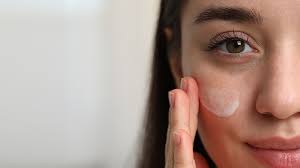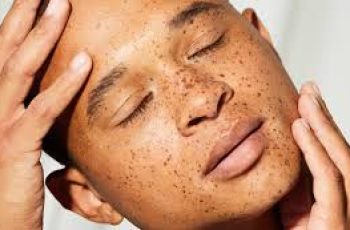
The Most Common Vitamin A Mistakes (According to a Dermal Therapist)
Vitamin A is often celebrated as the gold standard in skincare—and for good reason.
As a Dermal Therapist, I’ve worked with hundreds of clients looking to improve everything from fine lines and acne to pigmentation and dullness.
And when used correctly, vitamin A can be a true game-changer. It’s one of the most researched ingredients in dermatology, and its benefits go far beyond what most people realize.
However, despite all the hype and promise, I also see one recurring pattern: misuse.
All too often, I see people dive straight into a vitamin A product—excited to see results—only to find themselves dealing with dry, flaky, red, or even painful skin a few weeks later.
What went wrong? It usually comes down to one (or several) common mistakes.
If you’re considering incorporating vitamin A into your skincare routine—or if you’ve already started and you’re unsure if you’re doing it right—this article is for you.
Let’s break down exactly what vitamin A is, what it does, and the biggest mistakes I see in clinic, plus how to avoid them so you can enjoy the glowing, smooth, healthy skin you’re after.
What Is Vitamin A, and Why Is It So Powerful?
Vitamin A is not a single ingredient but rather a family of compounds known as retinoids. This group includes a variety of derivatives—each with different strengths and characteristics.
Some of the most commonly used forms include:
Retinyl esters (e.g., retinyl palmitate): the most gentle, often found in beginner products
Retinol: the most popular over-the-counter form, moderately potent
Retinal (retinaldehyde): stronger than retinol, with faster results
Retinoic acid (tretinoin): prescription strength, the active form your skin ultimately uses
What makes vitamin A so beloved is its ability to speed up cell turnover, stimulate collagen production, and improve skin texture and tone.
It’s used to target everything from acne and fine lines to pigmentation and dullness. In essence, it tells your skin to behave like younger, healthier skin.
But this increased activity comes at a price—especially if you’re not careful. Retinoids are powerful and can irritate or damage your skin when used incorrectly.
That’s why learning how to incorporate them properly is essential.
Mistake #1: Not Wearing SPF Daily
Let’s start with what is arguably the most important rule when using vitamin A: You absolutely must wear sunscreen. No exceptions.
Retinoids increase your skin’s sensitivity to sunlight by accelerating cell turnover and thinning the outermost layer of the skin.
While this helps with texture and tone, it also leaves your skin more vulnerable to UV damage, hyperpigmentation, and premature aging.
I never recommend vitamin A to a client unless they are committed to daily sun protection.
A broad-spectrum SPF 30 or higher should be applied every morning—regardless of the weather—and reapplied every 2-3 hours if you’re outside.
There is simply no point in using a powerful anti-aging product like vitamin A if you’re going to undo all its work with unprotected sun exposure.
Bottom line: Vitamin A and SPF go hand-in-hand. One without the other is counterproductive.
Mistake #2: Thinking More Is Better
It’s easy to assume that using a higher concentration or applying more product will get you faster results.
Unfortunately, that’s not how vitamin A works—and this mindset often leads to overuse and irritation.
Retinoids can disrupt your skin barrier if introduced too quickly or used too often.
The skin barrier is your skin’s natural defense system, responsible for retaining moisture and keeping out irritants. When compromised, it results in dryness, redness, peeling, and even breakouts.
Instead of diving in headfirst, I recommend the “low and slow” approach. Begin with a lower strength retinoid and apply it once or twice a week, gradually increasing frequency as your skin adjusts.
It can take 4–6 weeks for the skin to acclimate, and that’s okay. A small amount (about a pea-sized dot) is all you need for your entire face.
Pro tip: Apply a hydrating serum or moisturizer first (known as the “moisture sandwich” method) to buffer your skin while you’re still adjusting.
Mistake #3: Inconsistency
One of the most overlooked mistakes is inconsistency. Some people are so afraid of irritation that they stop using vitamin A for weeks at a time.
Others just forget. But consistent use is key to seeing long-term benefits.
Vitamin A works by training your skin over time. If you use it sporadically, you’re constantly restarting the adjustment period—and this can lead to frustration and lack of visible results.
Think of it like going to the gym: one great workout won’t get you fit, but consistent sessions over time will.
Build a realistic routine that you can stick to. Even if that means just twice a week in the beginning, consistency matters more than frequency.
Mistake #4: Cocktailing Too Many Active Ingredients
This one is a major cause of skin barrier damage, and I see it every week in clinic.
Vitamin A is a potent active—and when you mix it with other actives like AHAs, BHAs, benzoyl peroxide, or strong vitamin C, you can create a recipe for irritation.
Many of these ingredients also accelerate cell turnover, so layering them together can overwhelm your skin.
When introducing a retinoid, keep the rest of your routine simple and barrier-supportive. That means avoiding exfoliating acids until your skin builds tolerance.
Use your vitamin C in the morning and your vitamin A at night, not together. And always watch for signs of irritation: redness, burning, excessive dryness, or sensitivity.
Golden rule: Less is more. Let your vitamin A product do its job without interference.
Mistake #5: Not Supporting the Skin Barrier with Hydration
When you add an active like vitamin A to your routine, it’s essential to also nourish and support your skin. Hydration is a non-negotiable part of retinoid success.
A well-functioning skin barrier helps prevent moisture loss, reduces sensitivity, and improves tolerance to actives. When the barrier is compromised, skin becomes inflamed, dry, and more reactive.
Look for hydrating and barrier-repairing ingredients such as:
Hyaluronic acid
Glycerin
Ceramides
Panthenol
Squalane
Niacinamide (used cautiously, depending on the formula)
Using a gentle cleanser, a barrier-supporting moisturizer, and even adding in a hydrating serum or mist can make a world of difference in how your skin responds to vitamin A.
Mistake #6: Using the Wrong Derivative or Strength
Not all vitamin A products are created equal. Some are strong and fast-acting (like prescription retinoic acid), while others are slow-release or gentle (like retinyl palmitate).
Choosing the right derivative for your skin type and concerns is critical. If you’re sensitive or new to actives, starting with a high-strength retinol or retinal can cause unnecessary irritation.
If you’ve got resilient or oily skin, a gentle derivative may not provide the results you’re looking for.
This is where professional guidance from a dermal therapist can make all the difference.
A personalized recommendation ensures you’re using the right formula for your current skin needs—and avoids wasting money or damaging your skin.
Mistake #7: Applying Vitamin A in the Morning
Vitamin A should be used at night only. This isn’t just a myth—it’s based on science.
Retinoids can make your skin more sensitive to sunlight, increasing your risk of sunburn and photoaging.
Also, some forms of vitamin A (like retinol) can break down in UV light, reducing their effectiveness.
The ideal time to apply your vitamin A product is in the evening, after cleansing and before heavier serums or moisturizers. Let your skin repair overnight without the interference of sun exposure.
What Your Ideal Vitamin A Routine Might Look Like
If you’re starting with vitamin A, here’s a sample beginner routine:
PM Routine (2–3 times/week at first):
Gentle Cleanser – Non-foaming, fragrance-free
Hydrating Serum (Optional) – Like hyaluronic acid
Vitamin A – Pea-sized amount for the face, avoiding eyelids and corners of the nose/mouth
Barrier Moisturizer – With ceramides or squalane
AM Routine (Daily):
Gentle Cleanser
Vitamin C serum (optional)
Moisturizer
Broad-Spectrum SPF 30–50
Gradually increase the frequency of your vitamin A product as your skin adjusts—most people aim for every other night or nightly use eventually.
Final Thoughts: Vitamin A Is a Skin Hero—If Used Correctly
Vitamin A is one of the most powerful and effective skincare ingredients available, but it’s also one of the most misunderstood.
When used incorrectly, it can cause dryness, irritation, and long-term barrier damage. When used properly, it can transform your skin—improving texture, reducing acne, fading pigmentation, and softening fine lines.
The key is to go slow, support your barrier, and use sunscreen every day. Think of it as a long-term investment in your skin’s health.
If you’re unsure which product is right for you, or how to introduce vitamin A into your routine safely, working with a trained professional like a Dermal Therapist can save you time, money, and skin stress.
Trust the process, listen to your skin, and don’t rush. With consistency and care, vitamin A can become one of the most effective and rewarding parts of your skincare routine.


